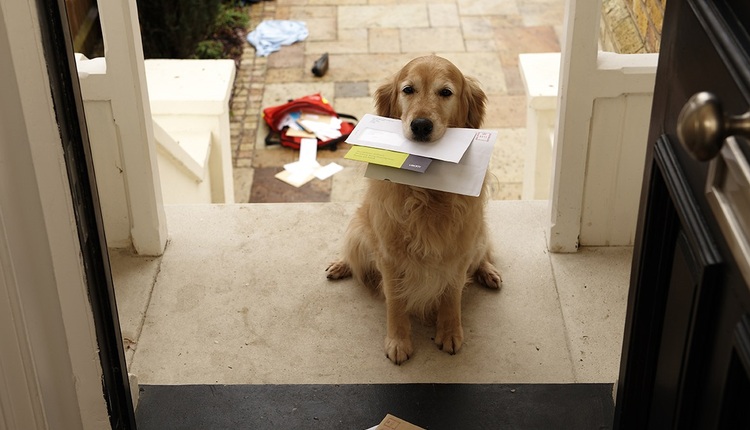Everyone has figured out how to sort mail.
Each year, high-volume mailers earn billions of dollars in discounts, taking advantage of USPS workshare concepts first introduced over 25 years ago. You employ software, systems and services that make it easy to sort, bag and tray your mail. You find new ways to innovate, enhancing workflows with improved barcoding and tracking. You may even sort incoming letters the same way, adding efficiency and accuracy to mail management. In short, you’ve figured it out.
Parcel sortation is different.
In many industries, the focus has shifted to shipping. E-commerce is clearly a driving factor. According to eMarketer, digital sales exceeded $1.5 trillion last year as more than one billion web-connected buyers purchased goods online. That’s only the start. Experts expect e-commerce to grow 15% over the next two years. In the US alone, business-to-consumer parcel delivery is growing at six percent per year.
With so many parcels to sort, you need to understand the challenge. Consider the five ways in which parcels differ most from mail:
· Shape. While letters are predominantly flat, parcels come in a wide range of sizes and shapes.
· Weight. A light-weight parcel could weigh a few ounces. A heavy-weight parcel could weigh a hundred pounds of more. Often, there’s no correlation between size and weight.
· Dimension. Beyond size and weight, you need to know the exact dimensions of each piece, as carriers charge more for bulky shipments, even if they contain low-weight items.
· More service options. Letters are predominantly sent via First-Class or Standard Mail. In shipping, you can choose ground, 2-day, next-day, same day. You can often select the time of day, or request special deliveries on Saturday or Sunday.
· Multiple carriers. While letter mail is the domain of the USPS, dozens of carriers handle parcels, including USPS, FedEx, USP plus a host of local and regional providers. Each carrier has their own rates, forms, rules and requirements.
While the distinct attributes of parcels and carriers add a level of complexity, the core principles behind parcel sortation will sound familiar. The primary goal, of course, is to maximize discounts. In some cases, you can save up to 40% or more by routing a parcel to the right carrier. You’ll want to process parcels in the most efficient manner to minimize manual processing. Plus, like in mail, you’ll want to focus on accuracy, security and tracking.
New Technologies Can Help You Capitalize on this Growth Opportunity
Shipping is the future, and organizations need to position themselves as capable, value-added providers if they hope to gain their fair share of this emerging market.
Fortunately, innovations in hardware and software, both physical and digital, can make it easier to transition into the parcels space. To excel, organizations will need the right tracking and technologies. Here are the seven must-have capabilities:
01. Multi-carrier management
Success starts with your ability to compare costs and service options across multiple carriers. You’ll need ways to calculate rates instantly, taking into consideration any fees or surcharges, so you can identify the best shipping option.
02. Automated parcel loading
Find ways to minimize manual processes. Whether you sort parcels in sacks or cartons, singular or in bulk, automated and semi-automated parcel loading can help boost productivity and minimize errors.
03. In-line scale and 3D measurement
Rates are based on size and shape, so you’ll need an ability to weigh parcels on-the-fly while accurately calculating dimensions.
04. Precise address readers
Handwritten labels can be difficult to decipher. Optical character recognition technology (OCR) and higher read rates lead to fewer mistakes so you can achieve on-time delivery.
05. In-line image capture
In addition to reading addresses, you’ll also want an ability to scan 1D and 2D barcodes. Leading systems also include built-in cameras that not only measure dimensions, but also record the condition of every package.
06. Automated label printing
Each carrier has their own forms and rules. With an automated, in-line label, print and apply process, you can expedite parcel preparation and ensure each piece conforms to the manifest requirements.
07. Back-end integration
Sortation does not occur in a vacuum. Each parcel represents an order, a customer, an invoice, an expense. Best-in-class solutions will seamlessly integrate with virtually any backend flat file, database or system, with support for client billing and custom reporting.
These capabilities are readily available today. In most cases, you may choose to add technology to your in-house operation or partner with service bureaus who already provide this expertise. Either way, the right approach to parcel sortation will provide greater accuracy, increased efficiency, and significant savings on carrier costs.
Consider the Possibilities
The right parcel sortation technology can serve as an entrée into new markets.
Like in mailing, parcel sortation applies to incoming parcels as well. This is particularly timely, as some organizations are receiving more parcels than ever before.
Consider, for example, a typical university environment. Not too long ago, inbound parcels consisted of the occasional cookie tray from grandma. Today, these same mail centers are overwhelmed by the volume of parcels received. Students can now order everything online, from books and clothing to dorm room furniture. Groceries, household goods and high-tech peripheries arrive every day, and mail centers are expected to sort, manage, and distribute each piece. Some schools are now using their sortation equipment to take a picture of each piece as it arrives, automatically emailing the recipient with pick-up instructions. That’s a smart use of technology.
Clearly, the lines between mailing and shipping continue to blur. While many mailers are considering how they can expand into parcel sortation, the reverse is also true. In most cases, the technology, processes and infrastructure required for parcel sortation can serve as the foundation for a thriving letter sorting operation.
One thing is certain: in today’s borderless, hyper-connected world of commerce, no one can afford to rest on yesterday’s success. For organizations who have figured out how to sort mail, parcels are the logical next step.
Grant Miller is Vice President Global Strategic Product Management, Strategy and Solution Delivery, Pitney Bowes.






![ThinkstockPhotos-482364649 [Converted]](https://cms-static.wehaacdn.com/mailingsystemstechnology-com/images/ThinkstockPhotos-482364649--Converted-.564.widea.0.jpg)
![ThinkstockPhotos-483452995 [Converted]](https://cms-static.wehaacdn.com/mailingsystemstechnology-com/images/ThinkstockPhotos-483452995--Converted-.459.widea.0.jpg)





